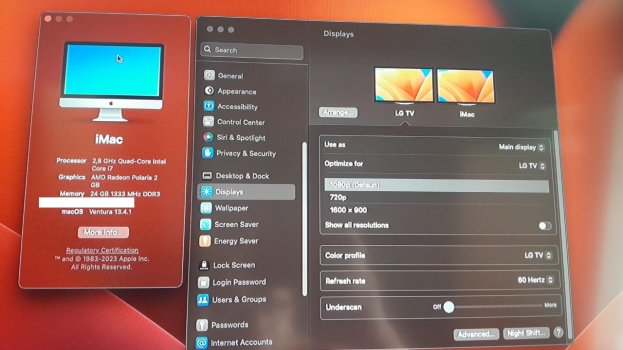So I checked the display cable after @xleo77 remained me. I do find out the cable was broken at the motherboard end(first picture I attached)! Thank you again!Hi everyone, I have a question about updating my 2010mid 27’ imac.
At first i have high sierra installed in. and my original graphic card dead somehow. Then I bought a AMD firepro M5100. After I finished the flash work and the hardware installation. I reset pram. then my external screen working well, and I install opencore1.1 in high sierra. Reboot and still only external display showed up. Did i do something wrong or what should I do to make internal screen working? It remains black no matter how many times I tear it apart and reinstall the screen. Please help. Thank you!
edit: The iMac just recognized one display. Only the external one.
Then I ordered another cable and received it this morning. I replaced it at once.
But something strange happened. Both internal and external screen black at first. Then with out the picker shown(which it should be). I just got a screen with out account name(the second picture I attached). Just a picture. And no other reaction. I sought I broke the cable again? Then I dissembled it. Turn on the power without internal screen attached. And Catalina works fine.
Even if the cable or the internal screen has hardware problem(but the new cable I got is a brand new one). Why the oc picker won't show up? and just show a picture?
The big iMac now is like a Mac mini to me. only works with out the internal screen. what should I do now?










